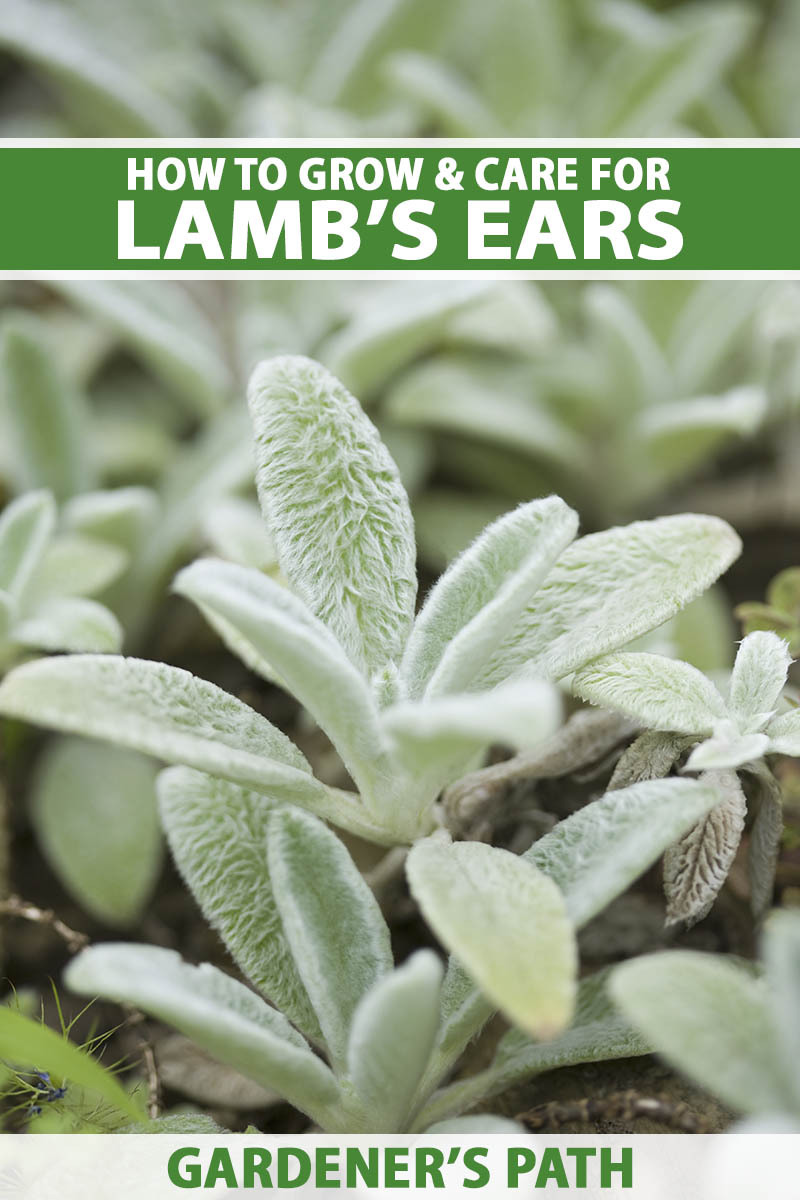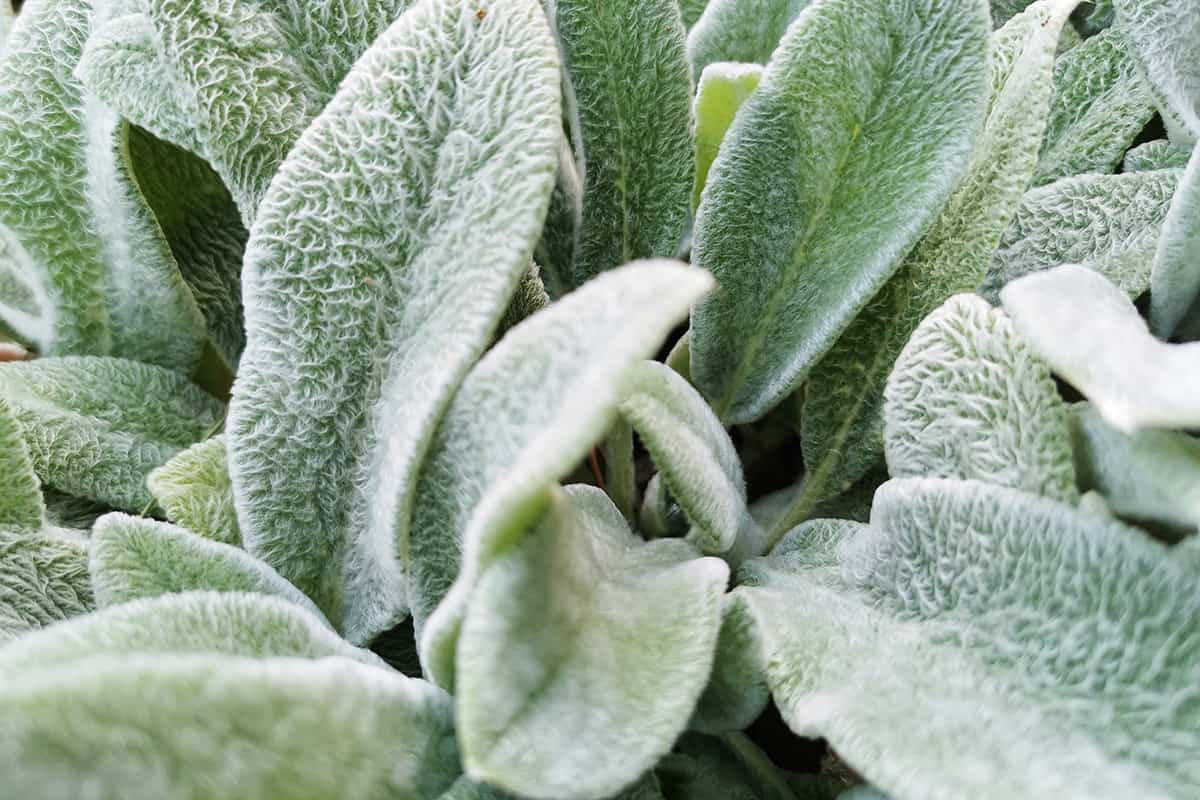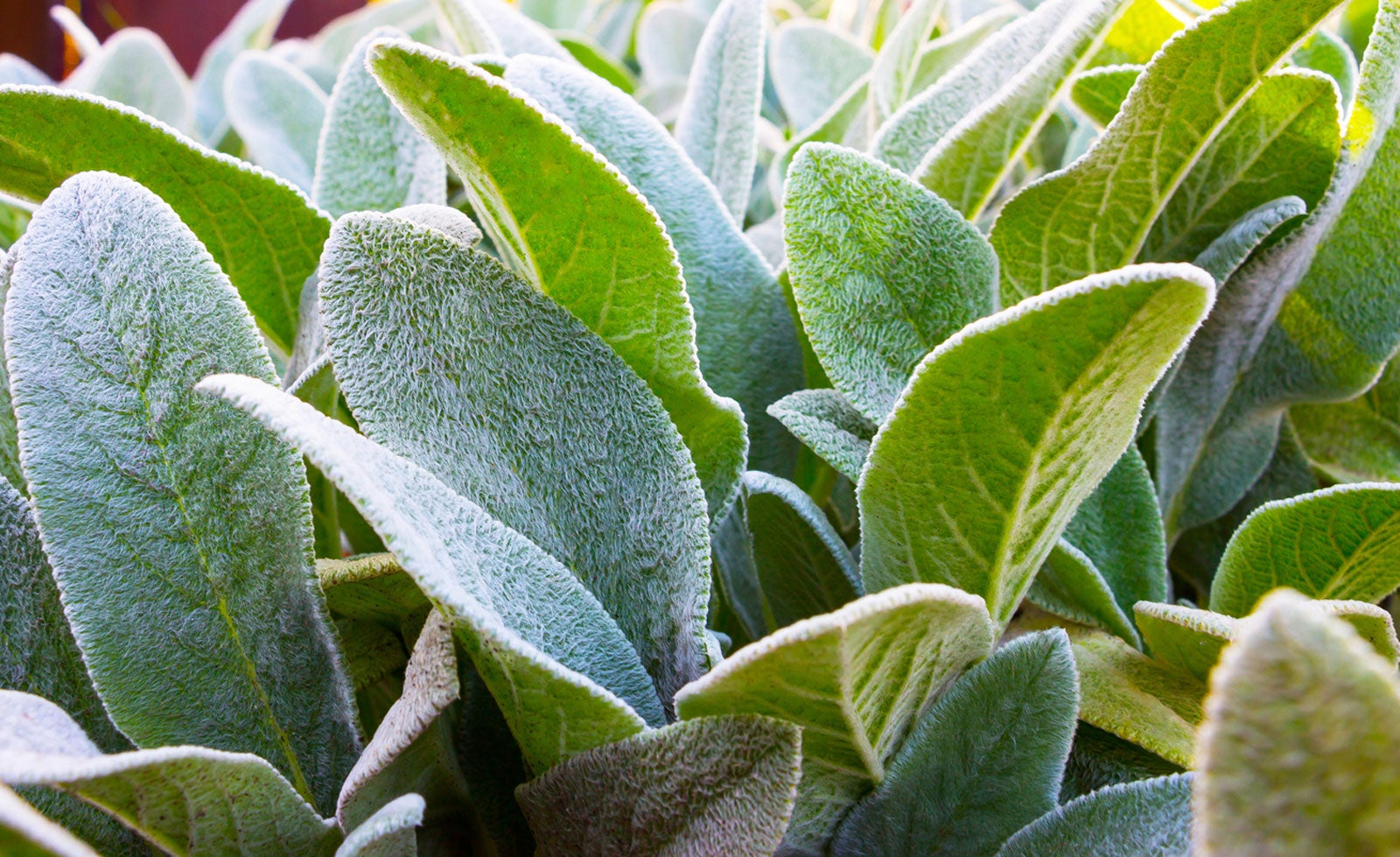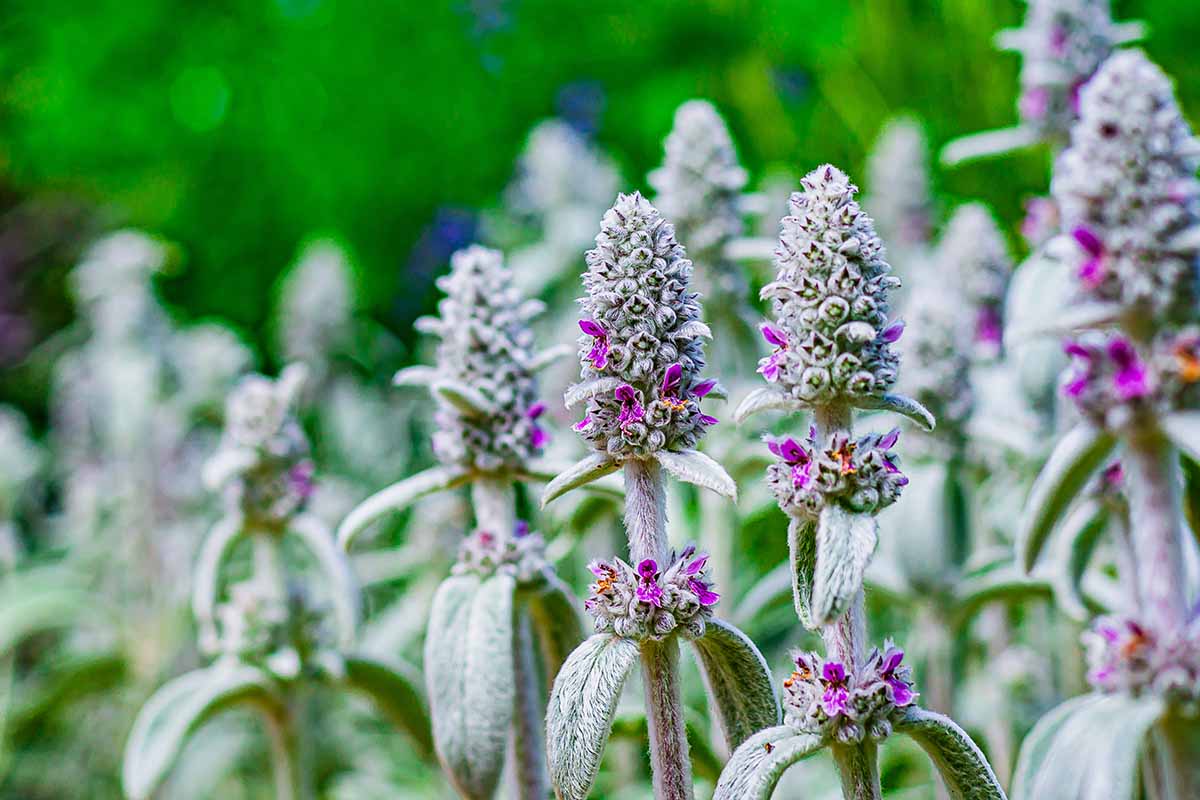Understanding the Unique Needs of Lamb’s Ear
Lamb’s Ear (Stachys byzantina) is a perennial herb native to the Mediterranean region, prized for its velvety soft, silver-gray leaves and delicate purple flowers. This charming plant has gained popularity in gardens and indoor spaces due to its low-maintenance requirements and unique texture. However, to maintain its beauty and promote healthy growth, it’s essential to understand the specific needs of Lamb’s Ear. Proper care is crucial to prevent common issues such as leaf drop, root rot, and pest infestations. By learning how to care for Lamb’s Ear, you can enjoy its soft, fuzzy leaves and vibrant flowers for years to come.
Lamb’s Ear is a member of the mint family and, as such, has similar growing requirements. It thrives in well-draining soil and partial shade, making it an ideal choice for containers or garden beds with limited sunlight. When grown indoors, Lamb’s Ear prefers bright, indirect light and consistent temperatures between 65°F to 75°F (18°C to 24°C). Understanding these basic needs is the first step in providing the right environment for your Lamb’s Ear plant to flourish.
As with any plant, Lamb’s Ear requires attention to its specific needs to prevent common problems. Overwatering, for instance, can lead to root rot, while underwatering can cause leaf drop. By learning how to care for Lamb’s Ear, you can avoid these issues and enjoy the many benefits of this beautiful plant. Whether you’re a seasoned gardener or a beginner, understanding the unique needs of Lamb’s Ear is the key to unlocking its full potential.
Providing the Right Environment for Lamb’s Ear to Thrive
To create an ideal environment for Lamb’s Ear plants, it’s essential to replicate the conditions found in their native Mediterranean region. Temperature is a critical factor, with Lamb’s Ear preferring daytime temperatures between 65°F to 75°F (18°C to 24°C) and nighttime temperatures around 55°F to 65°F (13°C to 18°C). Avoid placing Lamb’s Ear plants in areas with drafts or extreme temperature fluctuations, as this can cause stress and lead to disease.
Humidity is another crucial aspect of Lamb’s Ear care. These plants thrive in relatively low humidity, typically between 40% to 50%. To maintain optimal humidity levels, you can place the pot on a tray filled with water and pebbles or use a humidifier nearby. However, be cautious not to over-humidify, as this can lead to root rot and other issues.
Lighting is also vital for Lamb’s Ear plants. While they can tolerate some direct sunlight, they prefer bright, indirect light. East- or west-facing windows are ideal for indoor Lamb’s Ear plants, while outdoor plants should be placed in partial shade, especially during the hottest part of the day. When choosing a potting mix, select one that is well-draining and designed for Mediterranean plants. Avoid using regular potting soil, as it can retain too much water and cause root rot.
Containers also play a crucial role in providing the right environment for Lamb’s Ear plants. Choose pots that are at least 6-8 inches deep to accommodate the plant’s deep taproot. Make sure the pot has good drainage holes to prevent waterlogged soil. When selecting a container, consider using terracotta or ceramic pots, as they allow for better air circulation and moisture regulation.
By providing the right environment for your Lamb’s Ear plant, you can help it thrive and maintain its velvety softness and delicate appearance. Remember to monitor temperature, humidity, and light levels, and adjust as necessary to ensure optimal growth. With proper care, your Lamb’s Ear plant will reward you with its unique beauty and fragrance for years to come.
Watering Lamb’s Ear: The Delicate Balance
Watering is a critical aspect of Lamb’s Ear care, as these plants are sensitive to both overwatering and underwatering. To maintain the delicate balance, it’s essential to understand the watering needs of Lamb’s Ear plants. The key is to provide consistent moisture without waterlogging the soil. Lamb’s Ear plants prefer well-draining soil, and the potting mix should be designed to prevent water from accumulating in the soil.
To determine the optimal watering schedule, check the soil moisture by inserting your finger into the soil up to the first knuckle. If the soil feels dry, it’s time to water. Water thoroughly, making sure the pot drains well to prevent water from accumulating in the soil. Avoid getting water on the leaves or crown of the plant, as this can cause rot and other issues.
The frequency of watering depends on the environment and time of year. During the spring and summer months, Lamb’s Ear plants require more frequent watering, typically every 7-10 days. In the fall and winter months, reduce watering to every 4-6 weeks, as the plant is dormant. Adjust the watering schedule based on the temperature, humidity, and light levels in your area.
Overwatering is a common mistake when caring for Lamb’s Ear plants. This can lead to root rot, which can be fatal to the plant. To avoid overwatering, make sure the pot has good drainage holes, and avoid watering too frequently. If you notice the leaves turning yellow or droopy, it may be a sign of overwatering. Reduce watering immediately, and repot the plant in fresh, well-draining soil if necessary.
Underwatering can also be detrimental to Lamb’s Ear plants. If the soil is too dry for an extended period, the plant may drop its leaves or become stressed. To avoid underwatering, make sure to water thoroughly, and adjust the watering schedule based on the environment and time of year.
By understanding the delicate balance of watering Lamb’s Ear plants, you can provide the right conditions for optimal growth and maintain the plant’s velvety softness and delicate appearance. Remember to check the soil moisture regularly, adjust the watering schedule accordingly, and avoid overwatering and underwatering to ensure the health and well-being of your Lamb’s Ear plant.
Fertilizing Lamb’s Ear for Optimal Growth
Fertilizing is an essential part of Lamb’s Ear care, as it provides the necessary nutrients for optimal growth and development. Lamb’s Ear plants are heavy feeders and require a balanced fertilizer that is rich in nutrients. A water-soluble fertilizer with a balanced NPK ratio (nitrogen, phosphorus, and potassium) is ideal for Lamb’s Ear plants.
When choosing a fertilizer, look for one that is specifically formulated for Mediterranean plants like Lamb’s Ear. These fertilizers typically have a higher phosphorus content, which promotes healthy root development and flower production. Avoid using high-nitrogen fertilizers, as they can cause excessive leaf growth and reduce flowering.
Soil pH is also an important factor to consider when fertilizing Lamb’s Ear plants. These plants prefer a slightly acidic to neutral soil pH, ranging from 6.0 to 7.0. If your soil pH is too high or too low, it can affect the availability of nutrients and impact plant growth. Use a soil test kit to determine your soil pH and adjust it if necessary.
Apply fertilizer during the growing season (spring and summer) when Lamb’s Ear plants are actively producing new growth. Dilute the fertilizer to half the recommended strength to avoid burning the roots. Water the plant thoroughly after fertilizing to help the nutrients reach the roots.
Some organic fertilizers that are suitable for Lamb’s Ear plants include compost, manure tea, and fish emulsion. These fertilizers release nutrients slowly, providing a steady supply of nutrients to the plant. Avoid using synthetic fertilizers, as they can cause more harm than good in the long run.
By fertilizing your Lamb’s Ear plant regularly, you can promote healthy growth, encourage flowering, and maintain the plant’s velvety softness and delicate appearance. Remember to choose a balanced fertilizer, adjust the soil pH if necessary, and apply fertilizer during the growing season for optimal results.
Pruning and Grooming Lamb’s Ear for Shape and Size
Pruning and grooming are essential techniques for maintaining the shape and size of Lamb’s Ear plants. Regular pruning helps to promote healthy growth, encourages new leaves and stems, and maintains the plant’s velvety softness and delicate appearance. It’s also an effective way to control the plant’s size and shape, making it ideal for indoor containers or outdoor gardens.
To prune Lamb’s Ear plants, use a pair of clean, sharp scissors or pruning shears. Remove any dead or damaged leaves and stems, cutting them off at the base of the plant. This will help to prevent the spread of disease and encourage new growth. You can also trim back overgrown stems to maintain the plant’s shape and size.
When pruning, make sure to leave at least two sets of leaves on each stem to ensure the plant can continue to photosynthesize and grow. You can also prune Lamb’s Ear plants to encourage new growth, such as pinching off the tips of the stems to promote branching.
In addition to pruning, regular grooming is also important for maintaining the health and appearance of Lamb’s Ear plants. Use a soft-bristled brush or a clean cloth to gently remove any debris or dust from the leaves and stems. This will help to prevent pests and diseases from taking hold and keep the plant looking its best.
Another important aspect of pruning and grooming Lamb’s Ear plants is to encourage new growth. You can do this by providing the plant with enough light, water, and nutrients. You can also use a fertilizer specifically formulated for Lamb’s Ear plants to promote healthy growth and development.
By pruning and grooming Lamb’s Ear plants regularly, you can maintain their shape and size, promote healthy growth, and keep them looking their best. Remember to prune and groom your Lamb’s Ear plants regularly to ensure they continue to thrive and provide you with their unique beauty and fragrance.
Pest and Disease Control for Lamb’s Ear Plants
Lamb’s Ear plants are generally resistant to pests and diseases, but they can still be affected by common issues. Regular monitoring and maintenance can help prevent infestations and infections, but it’s also important to know how to treat them if they occur.
Spider mites are a common pest that can affect Lamb’s Ear plants. These tiny, spider-like insects feed on the plant’s sap, causing yellowing leaves and fine webbing on the stems. To control spider mites, use a gentle insecticidal soap or neem oil, and make sure to spray the undersides of the leaves and stems.
Mealybugs are another common pest that can affect Lamb’s Ear plants. These small, white insects feed on the plant’s sap, causing stunted growth and yellowing leaves. To control mealybugs, use a gentle insecticidal soap or neem oil, and make sure to spray the undersides of the leaves and stems.
Root rot is a common disease that can affect Lamb’s Ear plants. This fungal disease causes the roots to rot, leading to yellowing leaves and stunted growth. To prevent root rot, make sure the soil is well-draining and avoid overwatering. If root rot does occur, treat the plant with a fungicide and repot it in fresh, well-draining soil.
Other common pests and diseases that can affect Lamb’s Ear plants include aphids, whiteflies, and powdery mildew. Regular monitoring and maintenance can help prevent these issues, but it’s also important to know how to treat them if they occur.
To prevent pests and diseases from affecting your Lamb’s Ear plant, make sure to provide it with good air circulation, keep the soil well-draining, and avoid overwatering. Regularly inspect the plant for signs of pests or diseases, and treat them promptly if you notice any issues.
By following these tips, you can help keep your Lamb’s Ear plant healthy and thriving. Remember to monitor your plant regularly and take action promptly if you notice any signs of pests or diseases.
Propagating Lamb’s Ear Plants for New Growth
Propagating Lamb’s Ear plants is a great way to share these beautiful plants with friends and family, or to create new plants for your own garden or indoor space. There are several methods for propagating Lamb’s Ear plants, including division, leaf cuttings, and seed starting.
Division is a simple and effective method for propagating Lamb’s Ear plants. To divide a Lamb’s Ear plant, carefully dig up the entire plant and separate the roots into sections. Replant each section in a new pot or garden bed, making sure to provide enough space for the new plants to grow.
Leaf cuttings are another popular method for propagating Lamb’s Ear plants. To take a leaf cutting, choose a healthy leaf from the mother plant and cut it off at the base of the stem. Remove any lower leaves that will be submerged in water, and place the cutting in a glass of water or a propagation tray. Roots should develop within a few weeks, at which point the new plant can be transplanted into a pot or garden bed.
Seed starting is a more challenging method for propagating Lamb’s Ear plants, but it can be a fun and rewarding experience. To start Lamb’s Ear seeds, sow them indoors in a seed starting mix and provide warm temperatures and high humidity. Transplant the seedlings into individual pots or garden beds once they have two sets of leaves.
To increase the chances of successful propagation, make sure to provide the new plants with the right environment and care. This includes providing enough light, water, and nutrients, as well as protecting the plants from pests and diseases.
By propagating Lamb’s Ear plants, you can share these beautiful plants with others and create new plants for your own garden or indoor space. With a little patience and care, you can successfully propagate Lamb’s Ear plants and enjoy their velvety softness and delicate appearance for years to come.
Troubleshooting Common Issues with Lamb’s Ear Plants
Despite their hardiness, Lamb’s Ear plants can still encounter some common issues that can affect their health and appearance. In this section, we’ll address some of the most common problems that can arise when caring for Lamb’s Ear plants, and provide troubleshooting tips and solutions to help readers overcome these challenges.
Yellowing leaves are a common issue that can affect Lamb’s Ear plants. This can be caused by a variety of factors, including overwatering, underwatering, or exposure to too much direct sunlight. To address yellowing leaves, check the soil moisture and adjust the watering schedule accordingly. Also, make sure the plant is receiving the right amount of indirect sunlight.
Droopy stems are another common issue that can affect Lamb’s Ear plants. This can be caused by a lack of support, overwatering, or exposure to too much wind. To address droopy stems, provide the plant with a stake or trellis for support, and make sure the soil is well-draining to prevent waterlogged soil.
Slow growth is a common issue that can affect Lamb’s Ear plants. This can be caused by a lack of nutrients, inadequate light, or exposure to extreme temperatures. To address slow growth, fertilize the plant with a balanced fertilizer, and make sure it’s receiving the right amount of indirect sunlight.
By troubleshooting common issues with Lamb’s Ear plants, you can help ensure the health and well-being of your plant. Remember to monitor your plant regularly, and take action promptly if you notice any signs of distress. With the right care and attention, your Lamb’s Ear plant can thrive and provide you with its velvety softness and delicate appearance for years to come.



:max_bytes(150000):strip_icc()/lambs-ear-1402849-10-5aeb14aaacb74c9ba55e39949dc00b93.jpg)



:max_bytes(150000):strip_icc()/lambs-ears-uses-how-to-care-and-control-2132610-05-34192a7d1a224c299018c968384d8066.jpg)
